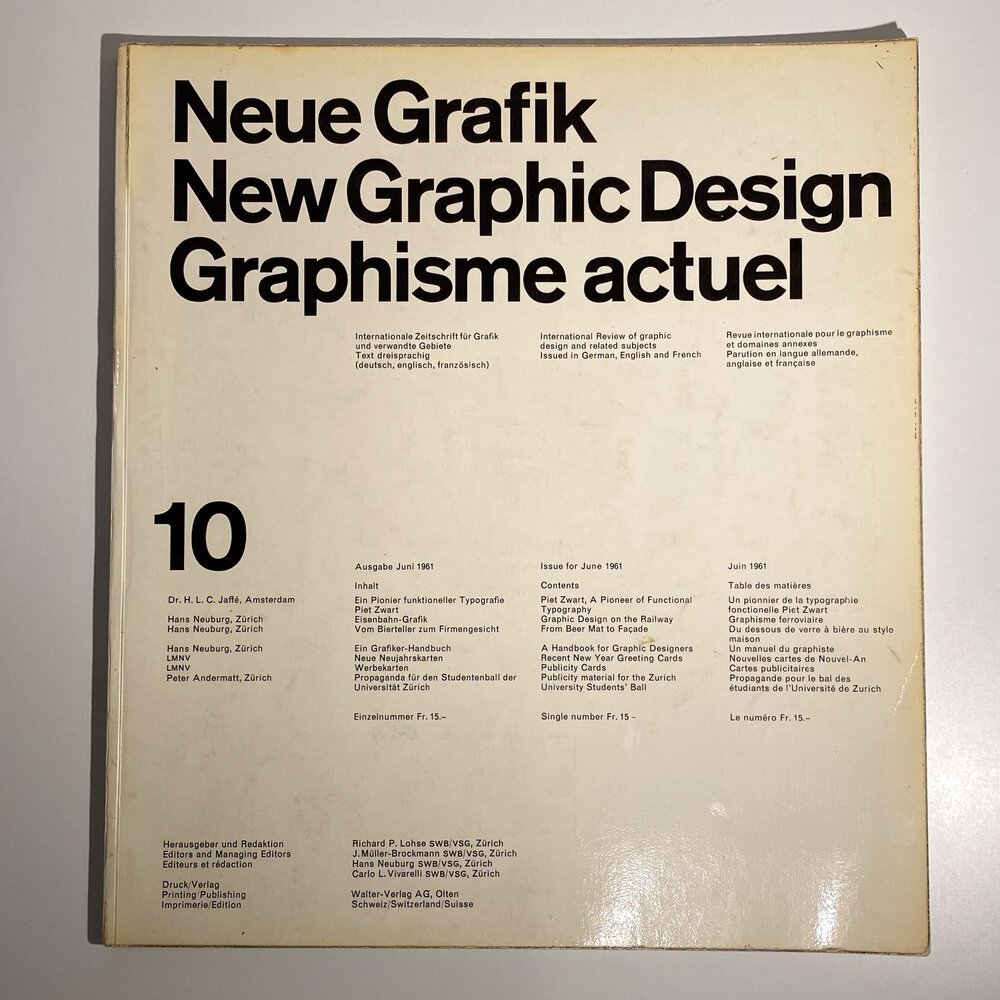 Image 1 of 12
Image 1 of 12

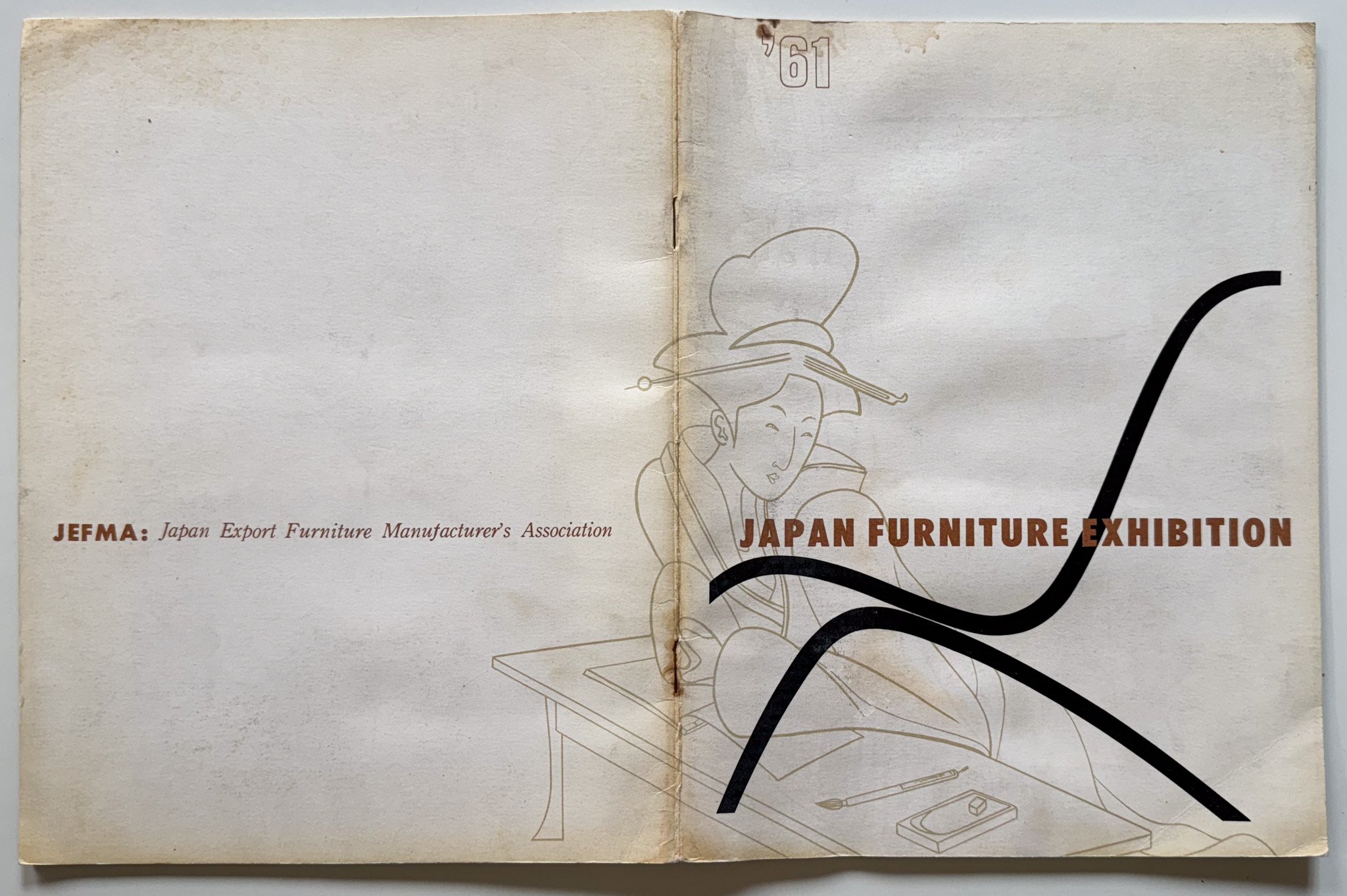 Image 2 of 12
Image 2 of 12

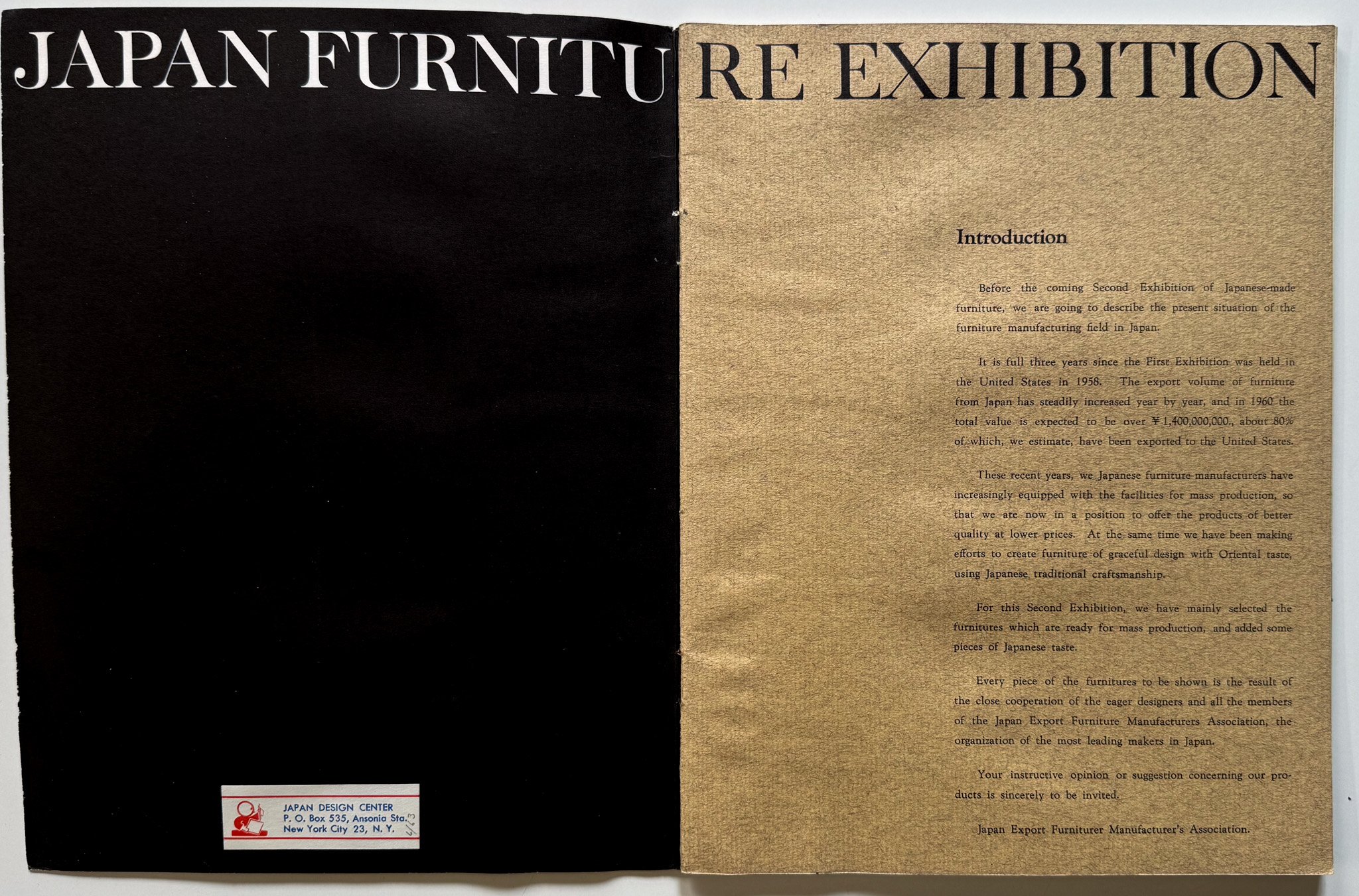 Image 3 of 12
Image 3 of 12

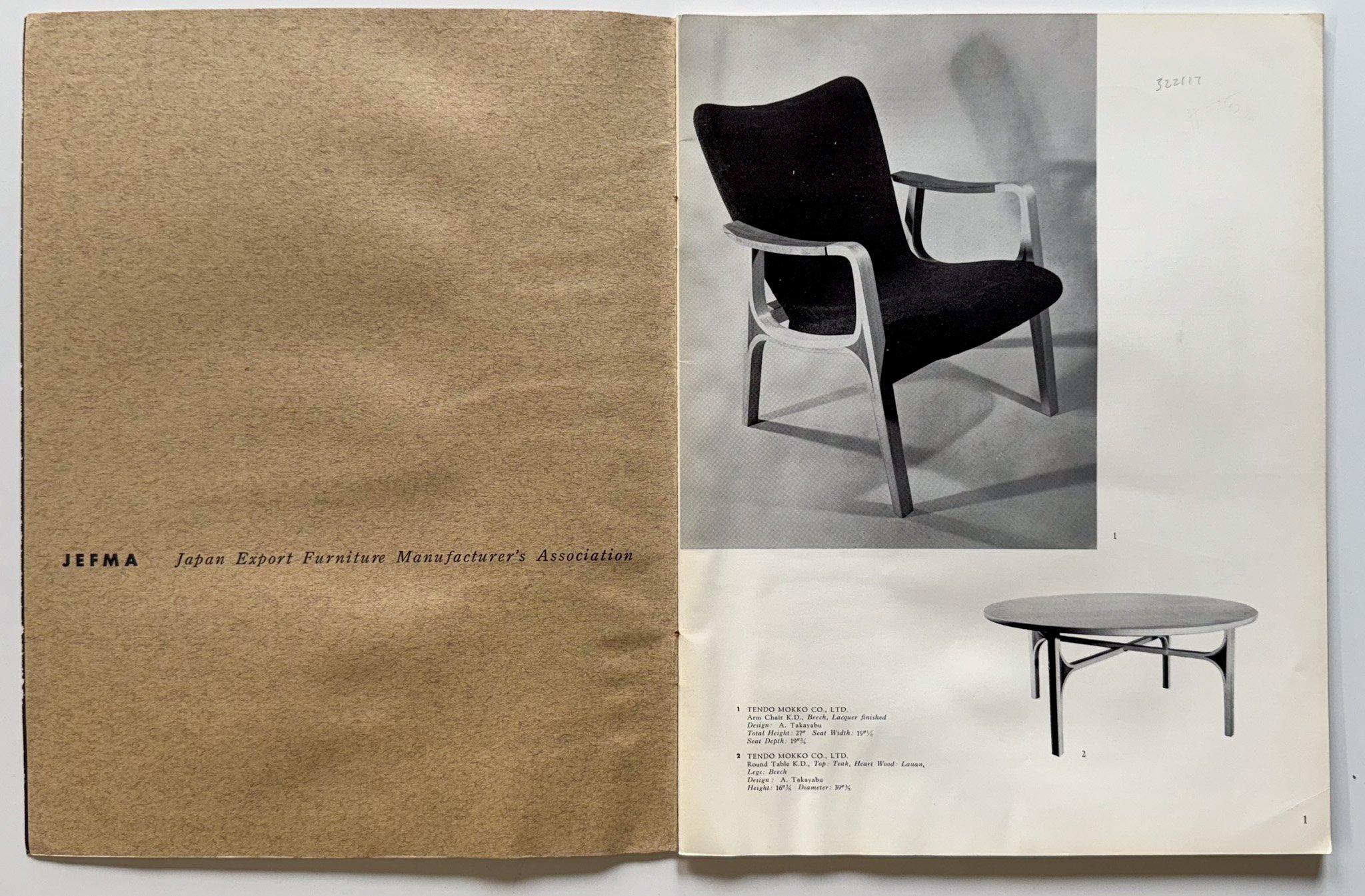 Image 4 of 12
Image 4 of 12

 Image 5 of 12
Image 5 of 12

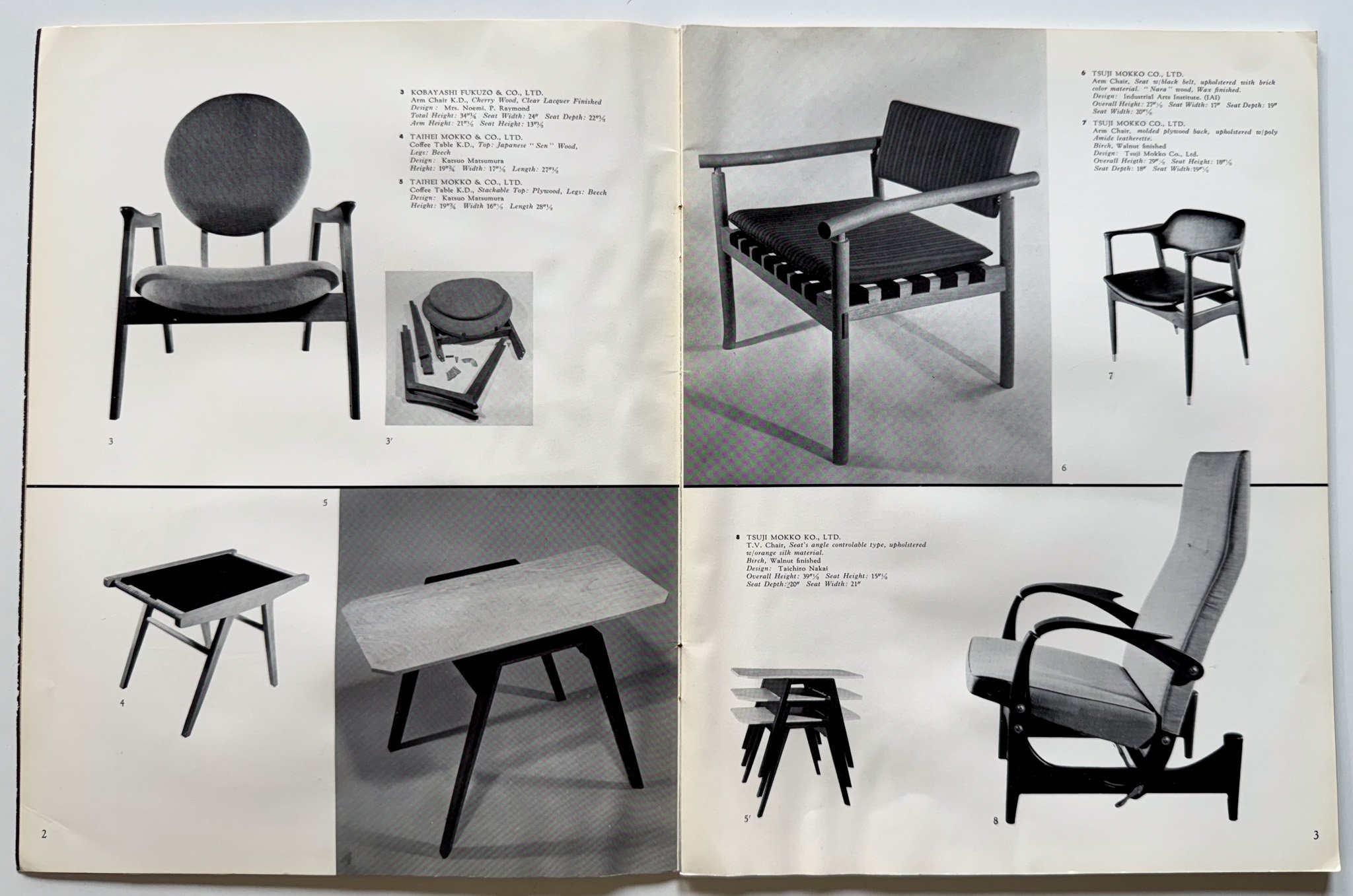 Image 6 of 12
Image 6 of 12

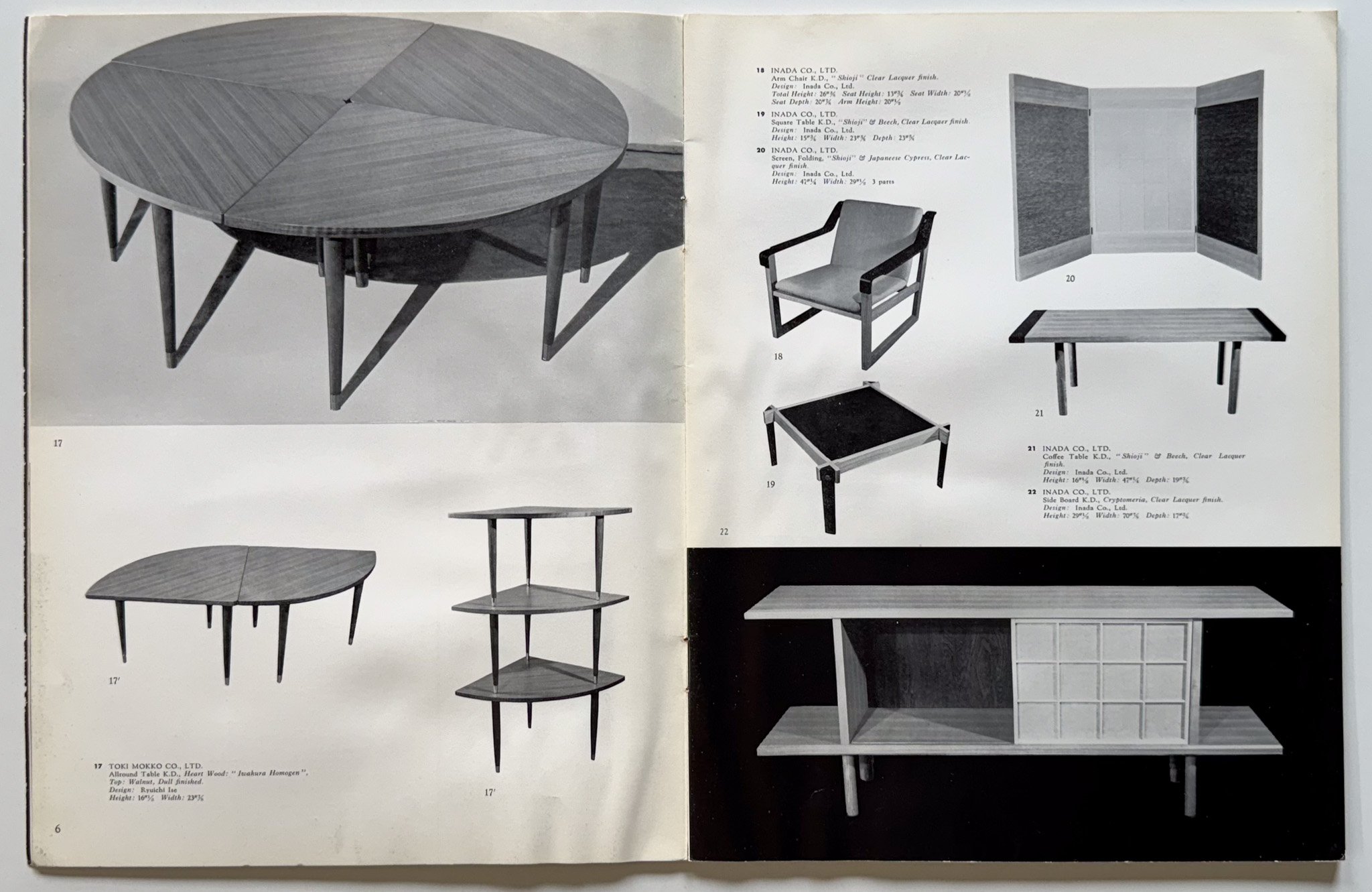 Image 7 of 12
Image 7 of 12

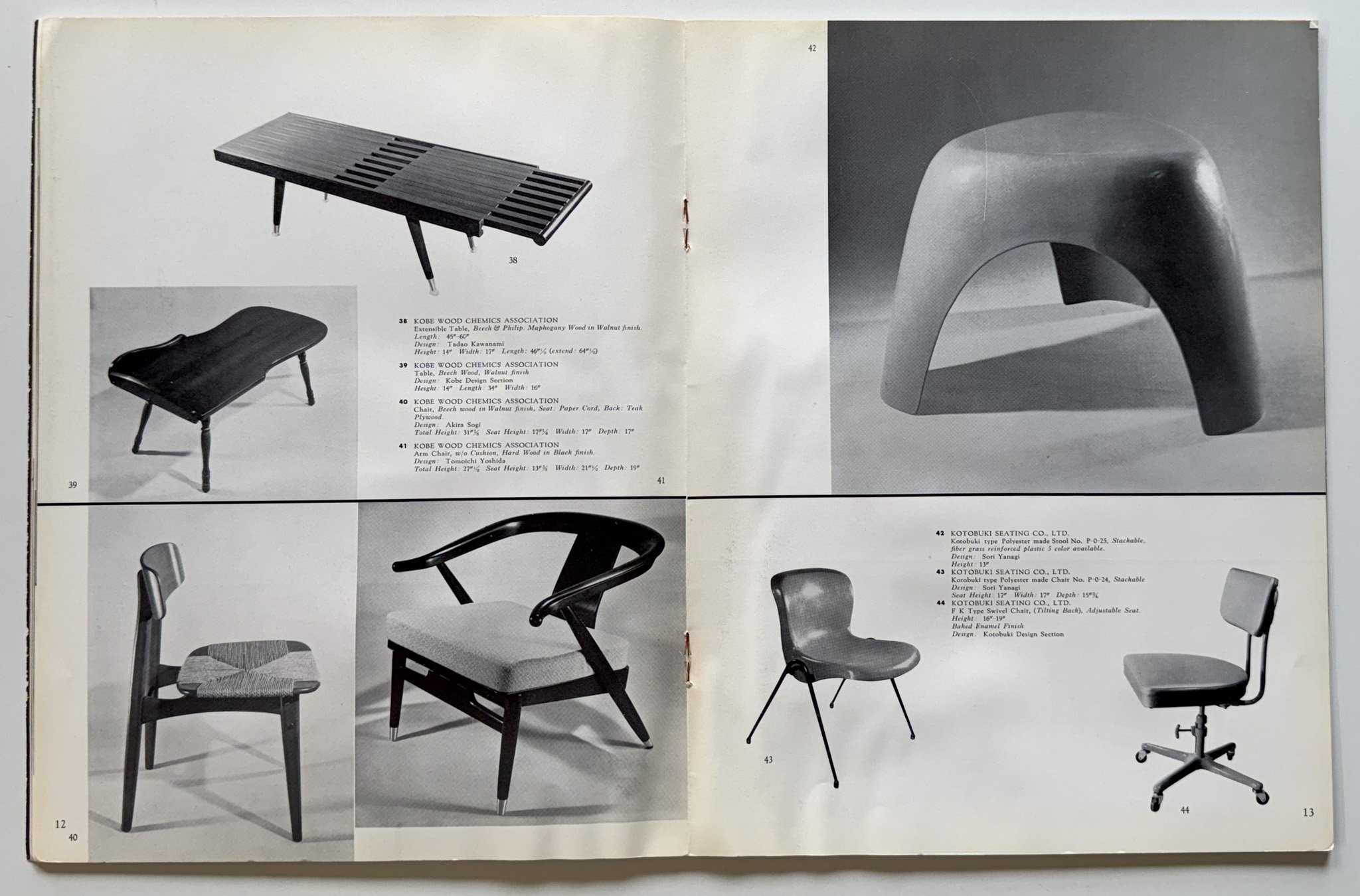 Image 8 of 12
Image 8 of 12

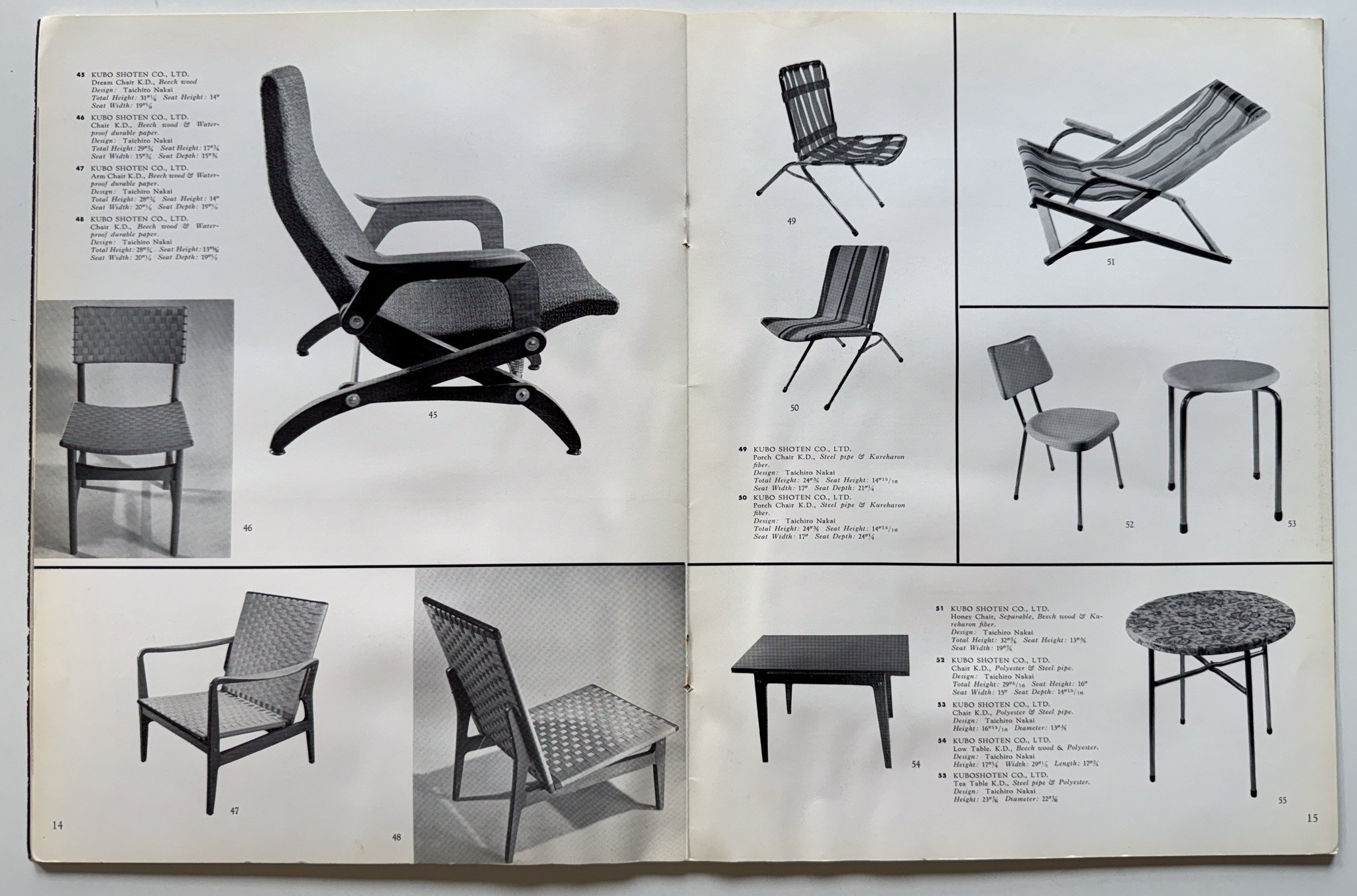 Image 9 of 12
Image 9 of 12

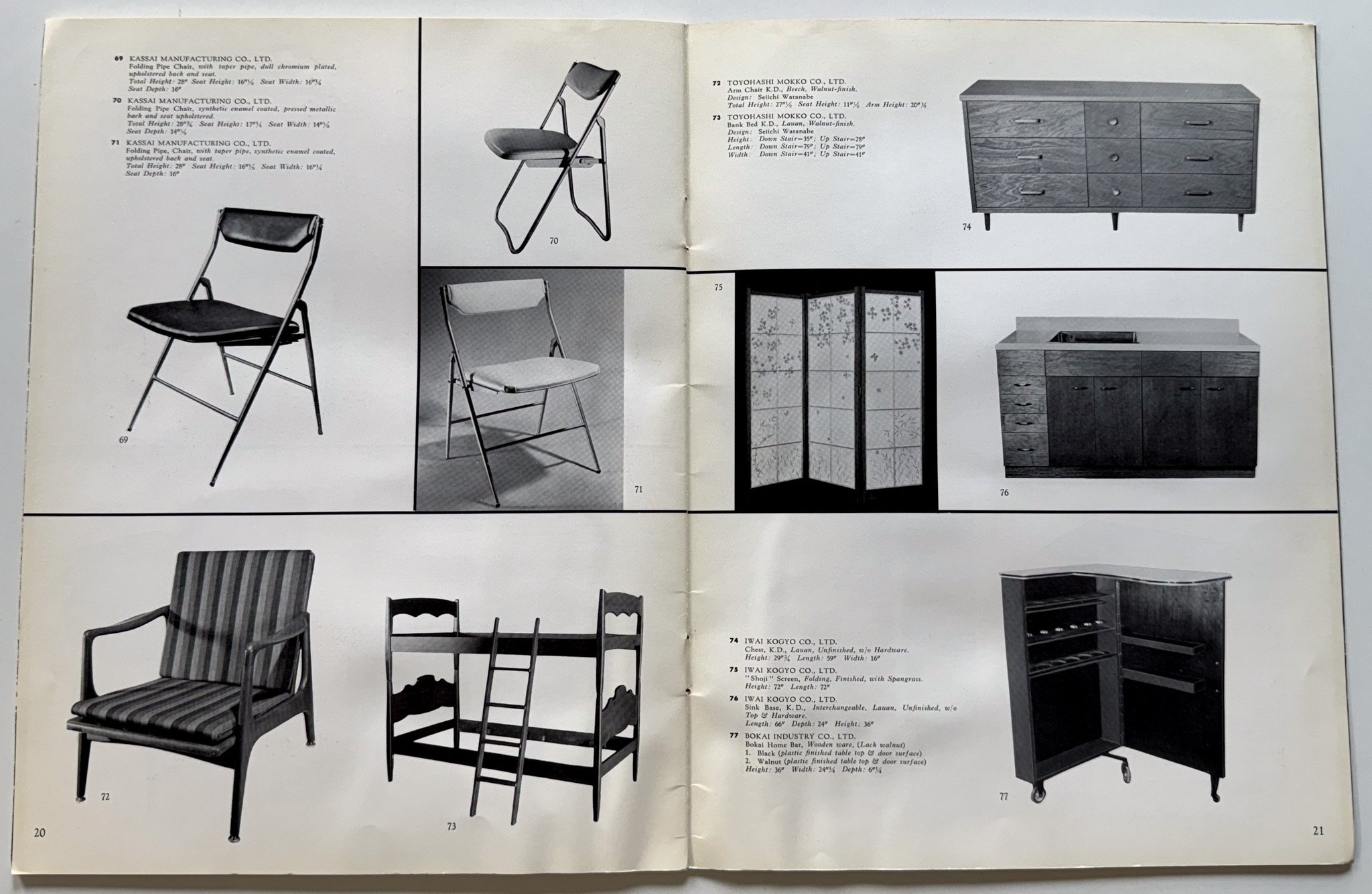 Image 10 of 12
Image 10 of 12

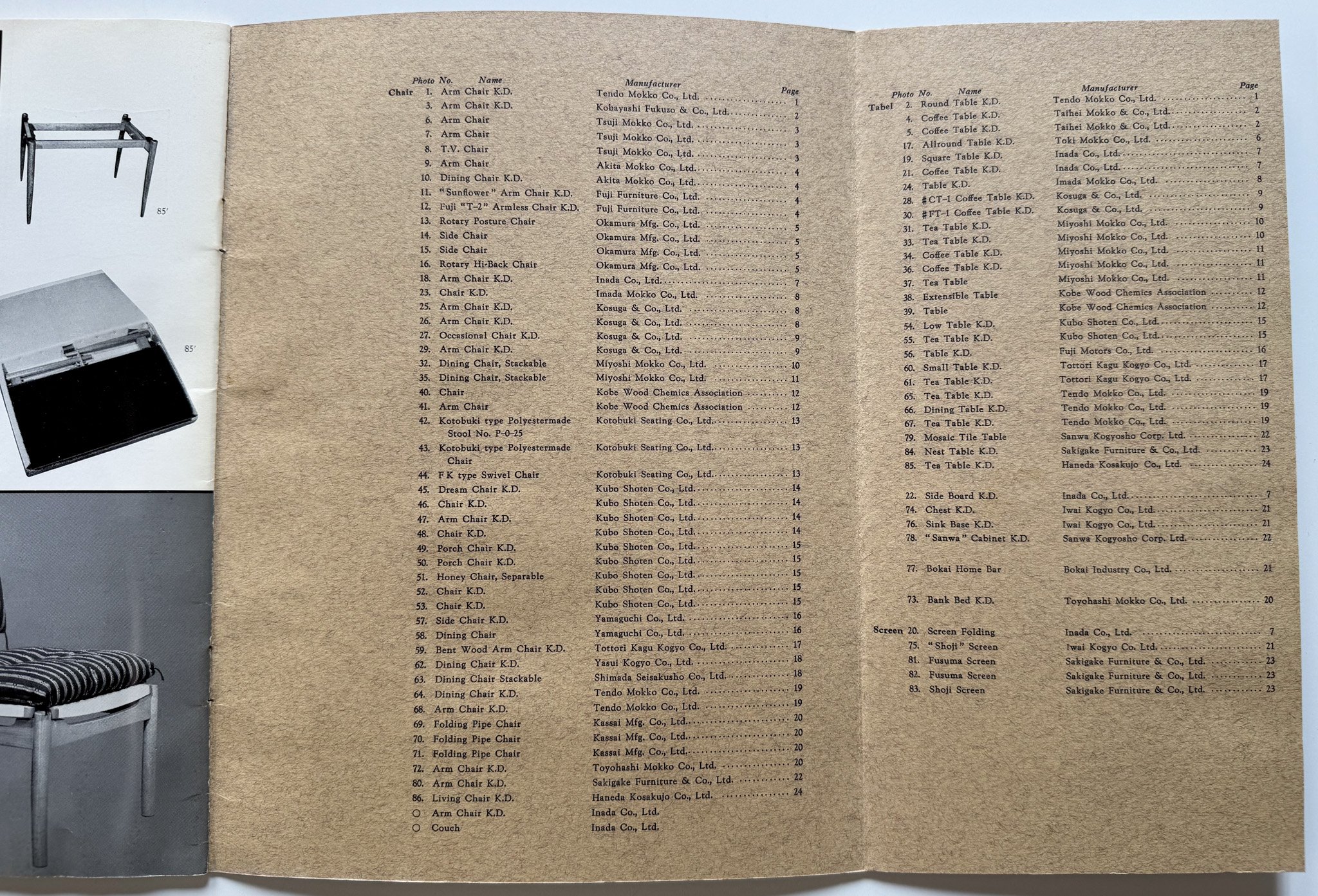 Image 11 of 12
Image 11 of 12

 Image 12 of 12
Image 12 of 12













Japan Furniture Exhibition '61
Catalog accompanying an exhibition held in the United States in 1961, sponsored and published by the Japan Export Furniture Manufacturer Association (JEFMA), a trade organization of 48 leading furniture makers in Japan, in collaboration with their government-run National Industrial Arts Institute, with the dual purpose of stimulating the production of Japanese “Good Design” in furniture, and introducing the results to the U.S. market. According to the introduction to this, the second iteration of this exhibition, “it is full three years since the First Exhibition was held in the United States in 1958…these recent years, we Japanese furniture manufacturers have increasingly equipped with facilities for mass production, so that we are now in a position to offer the products of better quality at lower prices. At the same time we have been making efforts to create furniture of graceful design with Oriental taste, using Japanese traditional craftsmanship. We have mainly selected the furnitures which are ready for mass production, and added some pieces of Japanese taste.”
The 24 page catalog presents chairs, tables, and case pieces by prominent Japanese architects and designers including Katsuo Matsamura, Taichiro Nakai, Kozo Asari, Hideo Saito, Takeshi Mineo, Yujiro Yamaguchi, Ryuchi Ise, Fukuji Suzuki, Masaharu Ito, Keisuke Nakamura, Yo Yamagishi, Shigeru Imai, Shiro Kodo, Tadao Kawanami, Akira Sogi, Tomoichi Yoshida, Sori Yanagi, Taichiro Nakai, Toshio Miyake, Motoi Kojima, Fukui Suzuki, Akira Takayabu, Selichi Watanabe, and T. Nii, along with works from the Industrial Arts Institute and an armchair by American ex-pat Noemi Raymond, wife of architect Antonin Raymond. Manufacturers include. Manufacturers represented in the exhibition include Akita Mokko Co, Bokai Industry Co, Fuji Furniture Co, Haneda, Kosajujo Co, Inada & Co, Iwai Kogyo Co, Imada Mokko Co, Kobe Wood Chemics Assoc., Kosuga & Co, Kotobuki Seating Co, Kobyashi Fukuzo & Co, K.K. Shimada Seisakusho, Kubo Shoten Co, Kassai Manufacturing Co, Miyoshi Mokko Co, Okamura Mfg. Co, Sakigake Furniture, Santa Kogyosho Corp, Tendo Mokko, Tsuji Mokko Co, Tottori Kagu Kogyo Co, Taihei Mokko Co, Toki Mokko Co, Toyohashi Mokko Co, Yamaguchi Co, and Yasui Kogyo Co. 8vo (8.5” x 11”), 24 pages plus introduction and index, staple-bound, printed wrappers, photographs throughout. Curatorial information includes designer and manufacturer names, materials, and measurements. A scarce reference source for identifying and documenting some best-practice —and equally scarce—Japanese midcentury designs. Bumping to extremities, with creasing to bottom corner of front wrapper. Some rubbing and soiling to wrappers, with small damp stains to top edge of front wrapper. Interior clean and bright.
Catalog accompanying an exhibition held in the United States in 1961, sponsored and published by the Japan Export Furniture Manufacturer Association (JEFMA), a trade organization of 48 leading furniture makers in Japan, in collaboration with their government-run National Industrial Arts Institute, with the dual purpose of stimulating the production of Japanese “Good Design” in furniture, and introducing the results to the U.S. market. According to the introduction to this, the second iteration of this exhibition, “it is full three years since the First Exhibition was held in the United States in 1958…these recent years, we Japanese furniture manufacturers have increasingly equipped with facilities for mass production, so that we are now in a position to offer the products of better quality at lower prices. At the same time we have been making efforts to create furniture of graceful design with Oriental taste, using Japanese traditional craftsmanship. We have mainly selected the furnitures which are ready for mass production, and added some pieces of Japanese taste.”
The 24 page catalog presents chairs, tables, and case pieces by prominent Japanese architects and designers including Katsuo Matsamura, Taichiro Nakai, Kozo Asari, Hideo Saito, Takeshi Mineo, Yujiro Yamaguchi, Ryuchi Ise, Fukuji Suzuki, Masaharu Ito, Keisuke Nakamura, Yo Yamagishi, Shigeru Imai, Shiro Kodo, Tadao Kawanami, Akira Sogi, Tomoichi Yoshida, Sori Yanagi, Taichiro Nakai, Toshio Miyake, Motoi Kojima, Fukui Suzuki, Akira Takayabu, Selichi Watanabe, and T. Nii, along with works from the Industrial Arts Institute and an armchair by American ex-pat Noemi Raymond, wife of architect Antonin Raymond. Manufacturers include. Manufacturers represented in the exhibition include Akita Mokko Co, Bokai Industry Co, Fuji Furniture Co, Haneda, Kosajujo Co, Inada & Co, Iwai Kogyo Co, Imada Mokko Co, Kobe Wood Chemics Assoc., Kosuga & Co, Kotobuki Seating Co, Kobyashi Fukuzo & Co, K.K. Shimada Seisakusho, Kubo Shoten Co, Kassai Manufacturing Co, Miyoshi Mokko Co, Okamura Mfg. Co, Sakigake Furniture, Santa Kogyosho Corp, Tendo Mokko, Tsuji Mokko Co, Tottori Kagu Kogyo Co, Taihei Mokko Co, Toki Mokko Co, Toyohashi Mokko Co, Yamaguchi Co, and Yasui Kogyo Co. 8vo (8.5” x 11”), 24 pages plus introduction and index, staple-bound, printed wrappers, photographs throughout. Curatorial information includes designer and manufacturer names, materials, and measurements. A scarce reference source for identifying and documenting some best-practice —and equally scarce—Japanese midcentury designs. Bumping to extremities, with creasing to bottom corner of front wrapper. Some rubbing and soiling to wrappers, with small damp stains to top edge of front wrapper. Interior clean and bright.
Catalog accompanying an exhibition held in the United States in 1961, sponsored and published by the Japan Export Furniture Manufacturer Association (JEFMA), a trade organization of 48 leading furniture makers in Japan, in collaboration with their government-run National Industrial Arts Institute, with the dual purpose of stimulating the production of Japanese “Good Design” in furniture, and introducing the results to the U.S. market. According to the introduction to this, the second iteration of this exhibition, “it is full three years since the First Exhibition was held in the United States in 1958…these recent years, we Japanese furniture manufacturers have increasingly equipped with facilities for mass production, so that we are now in a position to offer the products of better quality at lower prices. At the same time we have been making efforts to create furniture of graceful design with Oriental taste, using Japanese traditional craftsmanship. We have mainly selected the furnitures which are ready for mass production, and added some pieces of Japanese taste.”
The 24 page catalog presents chairs, tables, and case pieces by prominent Japanese architects and designers including Katsuo Matsamura, Taichiro Nakai, Kozo Asari, Hideo Saito, Takeshi Mineo, Yujiro Yamaguchi, Ryuchi Ise, Fukuji Suzuki, Masaharu Ito, Keisuke Nakamura, Yo Yamagishi, Shigeru Imai, Shiro Kodo, Tadao Kawanami, Akira Sogi, Tomoichi Yoshida, Sori Yanagi, Taichiro Nakai, Toshio Miyake, Motoi Kojima, Fukui Suzuki, Akira Takayabu, Selichi Watanabe, and T. Nii, along with works from the Industrial Arts Institute and an armchair by American ex-pat Noemi Raymond, wife of architect Antonin Raymond. Manufacturers include. Manufacturers represented in the exhibition include Akita Mokko Co, Bokai Industry Co, Fuji Furniture Co, Haneda, Kosajujo Co, Inada & Co, Iwai Kogyo Co, Imada Mokko Co, Kobe Wood Chemics Assoc., Kosuga & Co, Kotobuki Seating Co, Kobyashi Fukuzo & Co, K.K. Shimada Seisakusho, Kubo Shoten Co, Kassai Manufacturing Co, Miyoshi Mokko Co, Okamura Mfg. Co, Sakigake Furniture, Santa Kogyosho Corp, Tendo Mokko, Tsuji Mokko Co, Tottori Kagu Kogyo Co, Taihei Mokko Co, Toki Mokko Co, Toyohashi Mokko Co, Yamaguchi Co, and Yasui Kogyo Co. 8vo (8.5” x 11”), 24 pages plus introduction and index, staple-bound, printed wrappers, photographs throughout. Curatorial information includes designer and manufacturer names, materials, and measurements. A scarce reference source for identifying and documenting some best-practice —and equally scarce—Japanese midcentury designs. Bumping to extremities, with creasing to bottom corner of front wrapper. Some rubbing and soiling to wrappers, with small damp stains to top edge of front wrapper. Interior clean and bright.



